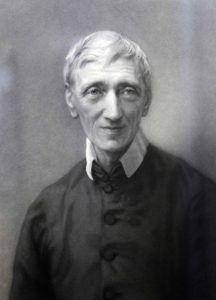
His long life spanned the nineteenth century. John Henry Newman was born in London in 1801 and died in Birmingham in 1890. His prosperous family endured hard times when he was young, but gave him a fine education and he entered Trinity College, Oxford when he was sixteen. As an adolescent, after briefly toying with rationalism, he was drawn into the Evangelical stream of Anglicanism and a closer relationship with Jesus Christ as his personal Lord and Saviour.
His Journey of Faith
After he became an Anglican priest in 1825, John Henry gradually moved beyond Evangelical views. He found himself at the heart of a circle of friends later known as the Oxford Movement or Tractarians. These scholarly men were striving to revive Catholic continuity, beliefs and practices within the Church of England. But they were bitterly opposed and rejected by the Protestant Establishment. At the same time, John Henry’s studies in the Church Fathers were steadily leading him away from Anglicanism and towards the Catholic Church. After a personal crisis, in 1845 he was received into the Church with some close friends. He then went to Rome to study for priesthood.
After ordination as a Catholic priest in 1847, Fr Newman returned to England and set up the community of priests known as the Oratory of St Philip Neri in a house near Birmingham, significantly named Maryvale. Before long, as a persuasive public champion of Catholicism he was guiding many converts to the fullness of Faith. No longer welcome at Oxford, he was active in founding a Catholic University in Dublin and his essay The Idea of a University is still revered. He committed the new university to the care of Our Lady Seat of Wisdom, Sedes Sapientiae.
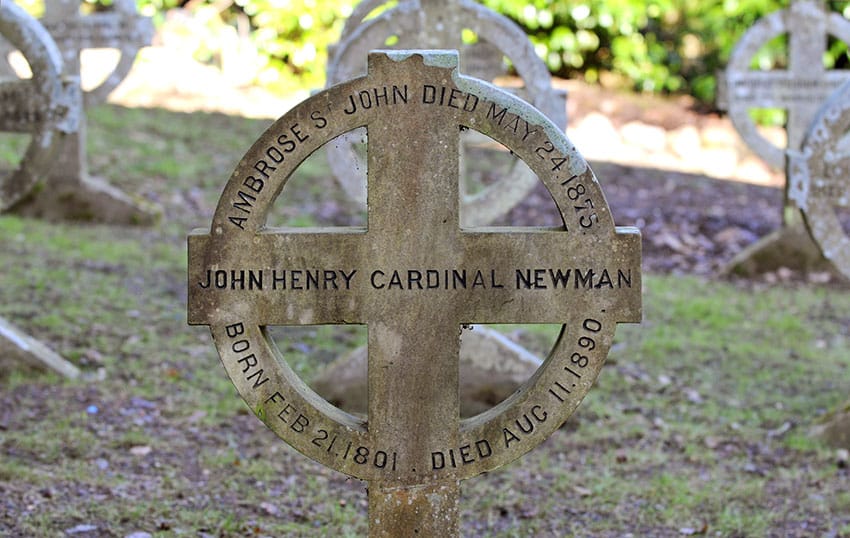
He lost favour in Rome because of his caution over the dogma of papal infallibility, defined in 1870 by Blessed Pius IX. But his reputation was restored in 1879 when Pope Leo XIII created him a cardinal. When he died, Cardinal Newman was respected throughout the English-speaking world, not only as a theologian and philosopher but as one of the finest writers of English prose, a poet and hymn writer. His theology of the vital role of the laity had a strong influence on the Second Vatican Council.
A Marian Saint
On October 13th 2019, John Henry Newman was canonized by Pope Francis. To celebrate this occasion, I concentrate on one dimension of his life, personal faith and writing: his devotion to Our Lady.
Newman’s tender love of Mary began in his Anglican days. In his era there was not much devotion to Mary among Anglicans, but as a vicar he preached on her holiness and her virtues, underlining her special place in the Scriptures. His expert study of the Church Fathers brought him face to face with the early developments of Marian doctrine and devotion. Yet he did not invoke Mary directly in prayer until after he became a Catholic. Once reconciled with the Church, his devotion to her was boundless. He took “Mary” as his Confirmation name and his devotion focused on her Immaculate Conception.
Defender of the Immaculate Conception
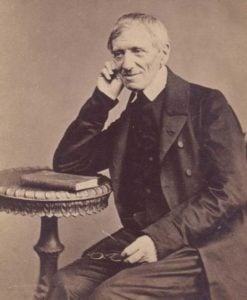
In 1854, nine years after Newman became a Catholic, Blessed Pius IX solemnly defined the dogma of the Immaculate Conception of the Blessed Virgin Mary. Father Newman welcomed the definition which, confirmed a truth he already promoted among the Catholic people in the Oratorians’ busy mission in Birmingham. But the papal teaching was denounced by Protestants and even upset his high church Anglican friends, so he set out to explain and defend the sinless origin of the Virgin, her freedom from original sin. He based his arguments on the two sources that always guided his Mariology: the inspired Scriptures and the teachings of the Church Fathers in the first centuries of Christianity.
He cited eight Fathers of the Church to show that Mary is the Second Eve whose obedience reverses the disobedience of the first Eve. He celebrated her as the Mother of God, Theotokos, defined by the Council of Ephesus in 431. From the Fathers he understood that Mary is the “all holy one”, panhagia, the Mother who is uniquely ever-Virgin, aieparthenos.
I believe Newman easily related to Mary because he was a chaste man, and her virginal purity inspired him. He regarded her as his tender mother and friend, because he valued his own family and his wide circle of friends, Catholic and Protestant. Although he suffered in health and under persecutions, he maintained Christian joy, humour and hope, looking always to the “cause of our joy”, the stella mattutina, the Morning Star guiding us to Christ, she who is “our life, our sweetness and our hope”. He also expressed his love of Mary in poetry. His motto Cor ad cor loquitur, “heart speaks to heart”, also applies to his relationship with our Blessed Mother.
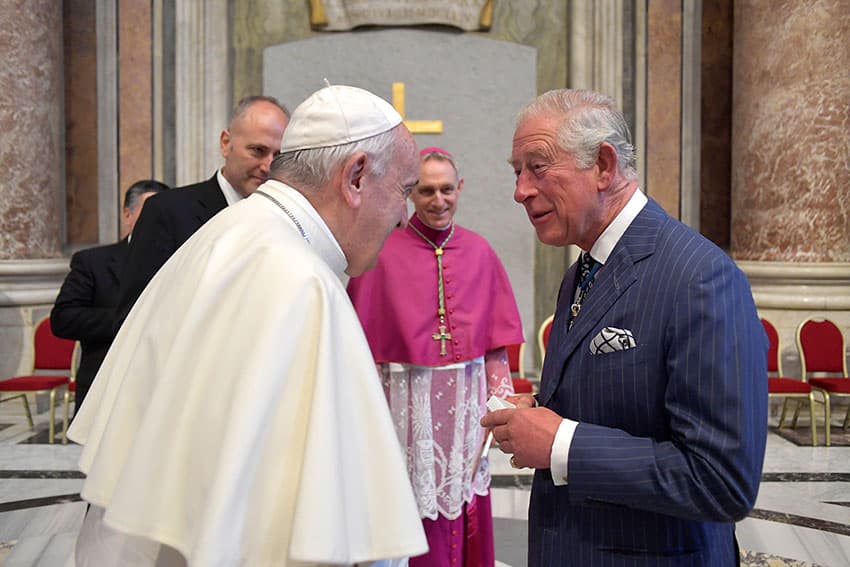
While his personal devotion was warm, even “italianate”, he was well aware of Anglican reactions to exaggerated language, for example the Marian enthusiasm of Father Fredrick Faber, founder of the Oratory in London, who used to call Our Lady “Mama”! Newman’s prudence is evident in his patient debate with his Anglican friend, Dr Edward Bouverie Pusey. This leading Anglo-Catholic was not comfortable with intense Marian devotion. By contrast, Father Newman felt at home with the warm faith and popular piety of his devoted parishioners, largely poor Irish folk, who prayed with him and who heard him preach on the Blessed Mother at the Birmingham Oratory.
They welcomed his meditations on the rich titles of Mary in the Litany of Loreto, his preaching on the rosary, his promotion of May devotions, his praise of the glories of Mary, his reflection on her sorrows, all resting upon a profound understanding of the Marian truths, faith as the basis for devotion. He constantly returns to these truths: her Immaculate Conception, her perpetual virginity, her divine maternity, her sharing in the redeeming suffering of her Son, her glorious Assumption into heaven and her powerful intercession for us as the Church on earth. But did he believe in apparitions of Our Lady?
Apparitions?
While his Essays on Miracles reveal his firm belief in miracles, both as recorded in Scripture and in the early centuries of the Church, we have no clear evidence about Newman’s attitude to appearances of Our Lady.
The apparitions of Lourdes in 1858 drew no special comment from him but, in 1882, he offered a novena for the Duke of Norfolk’s afflicted son when he was taken to Lourdes on pilgrimage. He kept a holy card from Lourdes blessed by Pope Leo XIII in his private rooms at the Birmingham Oratory. His closest friend, Fr Ambrose St John, took Lourdes water during a final illness. He was given a book on appearances of Mary, especially at Lourdes, but we do not know whether he read it. He received many books.
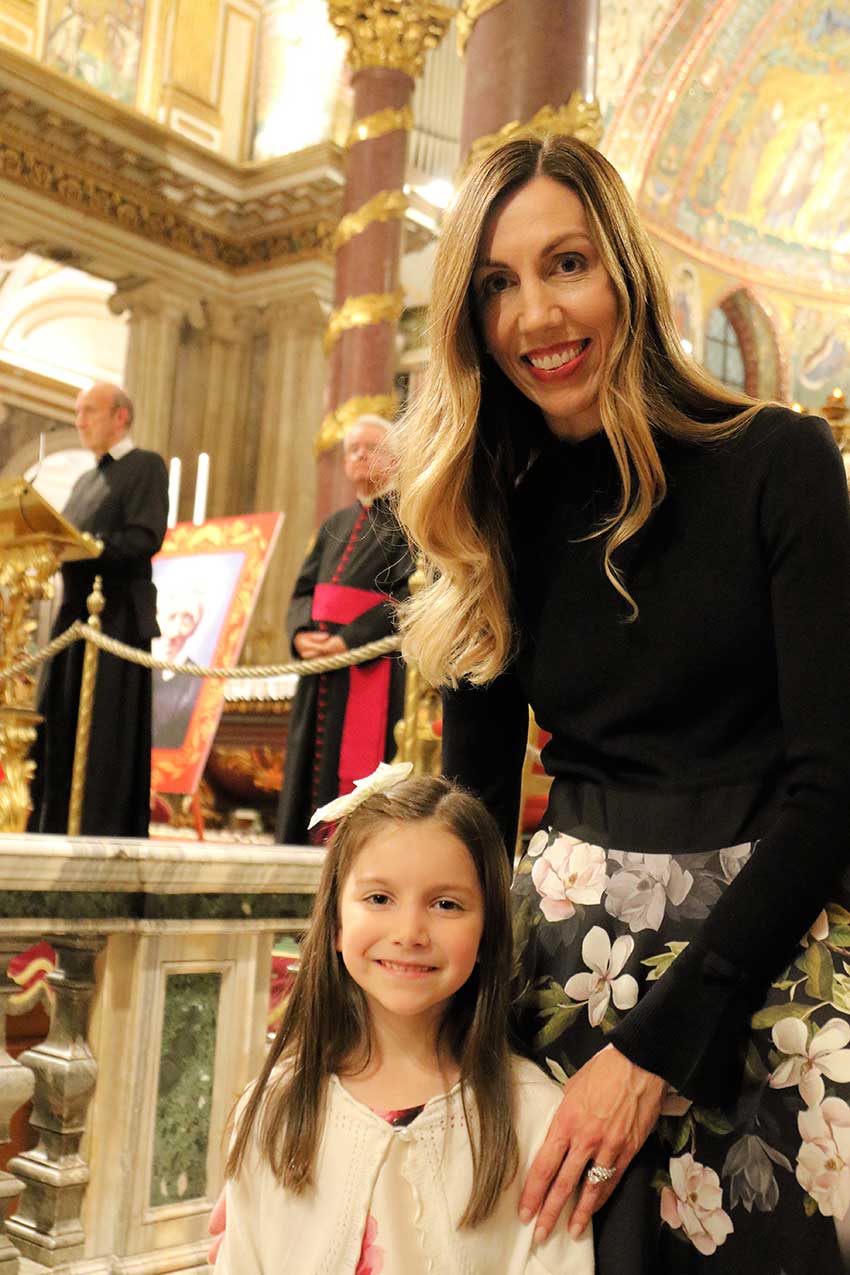
I do not believe John Henry was particularly interested in apparitions as such. His Marian devotion did not depend on them – and that is a message for all of us. If your devotion to Our Lady rests on apparitions, it is not soundly based. Newman would call us all back to the doctrinal basics, to those glorious truths about Mary, because we should base our personal devotion on faith.
Apocalyptic Saint
The apparitions at Fatima happened twenty-seven years after Newman’s death. But I would link him to the message of Fatima because of his strong awareness of salvation history and his spirituality of the perennial struggle between good and evil, which are central themes in the message and warnings of Fatima
Saint John Henry had an apocalyptic understanding of the meaning of time, particularly when preaching on the second coming of Christ and divine judgement.
This tendency took on a rather alarming form in his four lectures on The Patristical Idea of Antichrist, given 20 years before he became a Catholic. He drew on the Church Fathers to interpret this mysterious evil person who, so the Scriptures assure us, will emerge, rise to power and mislead millions in the last days of our world. Newman sensed that we have entered those “end times”.
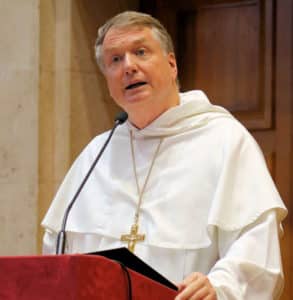
Having described the atheistic blasphemies and sacrileges of the French Revolution, still a vivid memory in his day, this upright and pure man read the ominous “signs of the times”. He named and confronted the doubt and moral decay in his own era. Later, as a Catholic he deplored the emergence of anti-Christian ideology and new heresies, that would afflict the Church from without and within. Setting aside his learned speculations on the Antichrist, let me quote the concluding words of those lectures for surely he speaks to us today:
“It will act as a curb upon our self-willed, selfish hearts, to believe that a persecution is in store for the Church, whether or not it comes in our days. Surely, with this prospect before us, we cannot give ourselves up to thoughts of ease and comfort, of making money, settling well, or rising in the world. Surely, with this prospect before us, we cannot but feel that we are, what all Christians really are in the best estate (nay, rather would wish to be, had they their will, if they be Christians in heart), pilgrims, watchers waiting for the morning, waiting for the light, eagerly straining our eyes for the first dawn of day – looking out for our Lord’s coming, His glorious advent, when He will end the reign of sin and wickedness, accomplish the number of His elect, and perfect those who at present struggle with infirmity, yet in their hearts love and obey Him.”
Time and Eternity
This holy man may have speculated with apprehension about the future, but he never gave in to gloom or despair because he always understood time in the light of eternity. He saw his own life as a journey with a plan and purpose, marked by what he called a “particular providence”, that is, God’s loving care for each of us at particular moments in our journey. This is why his attitude to the Blessed Mother was one of filial confidence. He trusted in her power to help and heal, to keep us with her Son, to guide us safely home, into eternal life and light. His epitaph reflects this hope: Ex umbris et imaginibus in veritatem, “From shadows and images into the truth”.
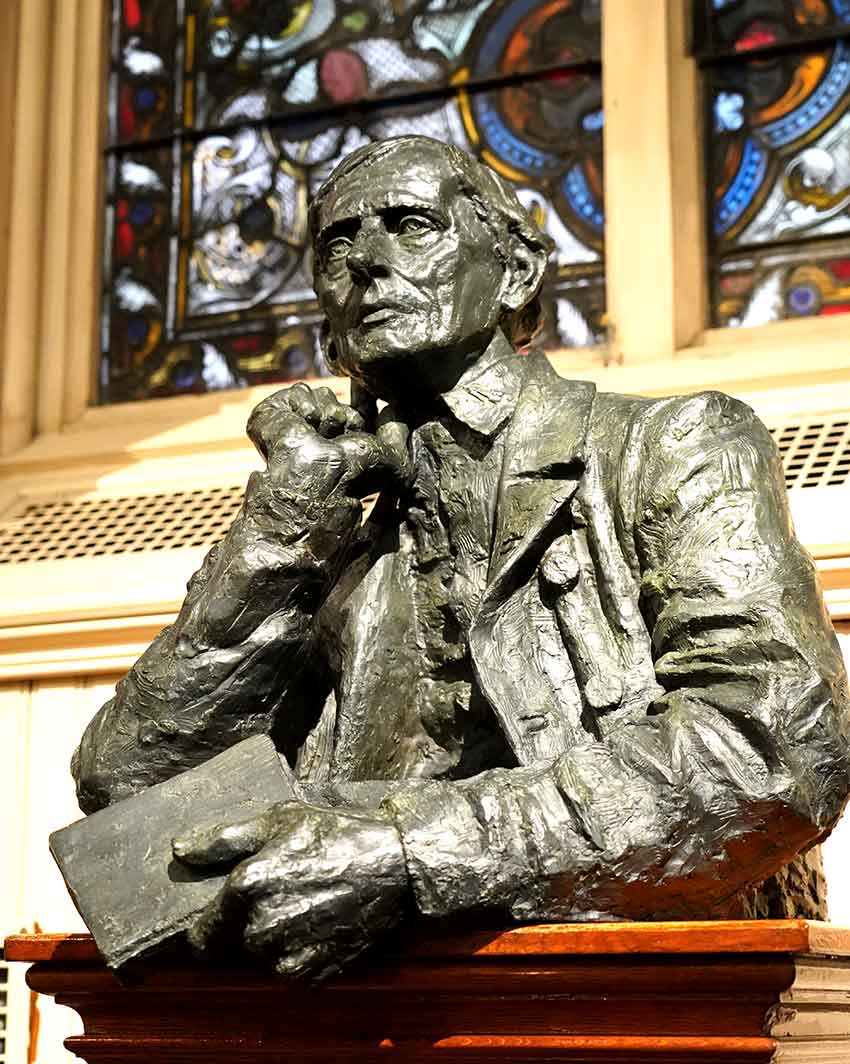
Spiritual optimism, grounded in trust and hope, shines forth in his beautiful sermon on “The Second Spring”. On July 13th 1852, he preached to the new bishops of England who had assembled for the first time in the chapel of Oscott College. That was two years after Blessed Pius IX restored the Catholic hierarchy and divided England into new dioceses. Father Newman reclaimed England as “Our Lady’s Dowry” with inspiring and encouraging words of hope, which again speak to us:
“Arise, Mary, and go forth in thy strength into that north country, which once was thine own, and take possession of a land which knows thee not. Arise, Mother of God, and with thy thrilling voice, speak to those who labour with child, and are in pain, till the babe of grace leaps within them! Shine on us, dear Lady, with thy bright countenance like the sun in his strength O stella mattutina, O harbinger of peace, till our year is one perpetual May. From thy sweet eyes, from thy pure smile, from thy majestic brow, let ten thousand influences rain down, not to confound or overwhelm, but to persuade, to win over thine enemies. O Mary, my hope, O Mother undefiled, fulfil to us the promise of this Spring.”
Author’s note: I am indebted to Bishop Philip Boyce, Bishop Emeritus of Raphoe, Ireland, for his help in the preparation of this paper and for his book Mary: The Virgin Mary in the Life and Writings of John Henry Newman.
Related:
- Woman’s healing accepted as miracle for Newman cause
- Archbishop Anthony Fisher OP: St Newman’s teaching on conscience timely
This paper was delivered by Bishop Peter Elliott at the Marian Festival held at Sacred Heart Cathedral, Bendigo, in Victoria on 13 October 2019.
